Review and photos by OkapiBoy
On our last review, we explored the deep and mysterious highland forest of the Annamites mountain range where we met one of its rarest inhabitant.Today, we will head down to the lowlands and forest edges to meet another bovine, this time a large one.
Tropical rainforest are one of the most threatened ecosystem in the world, and animals that depends on them and call it home are also some of the most endangered.
The rainforest of Southeast Asia in particular are hard hit by deforestation and booming human populations that continues to push what remains into smaller and fragmented patches.
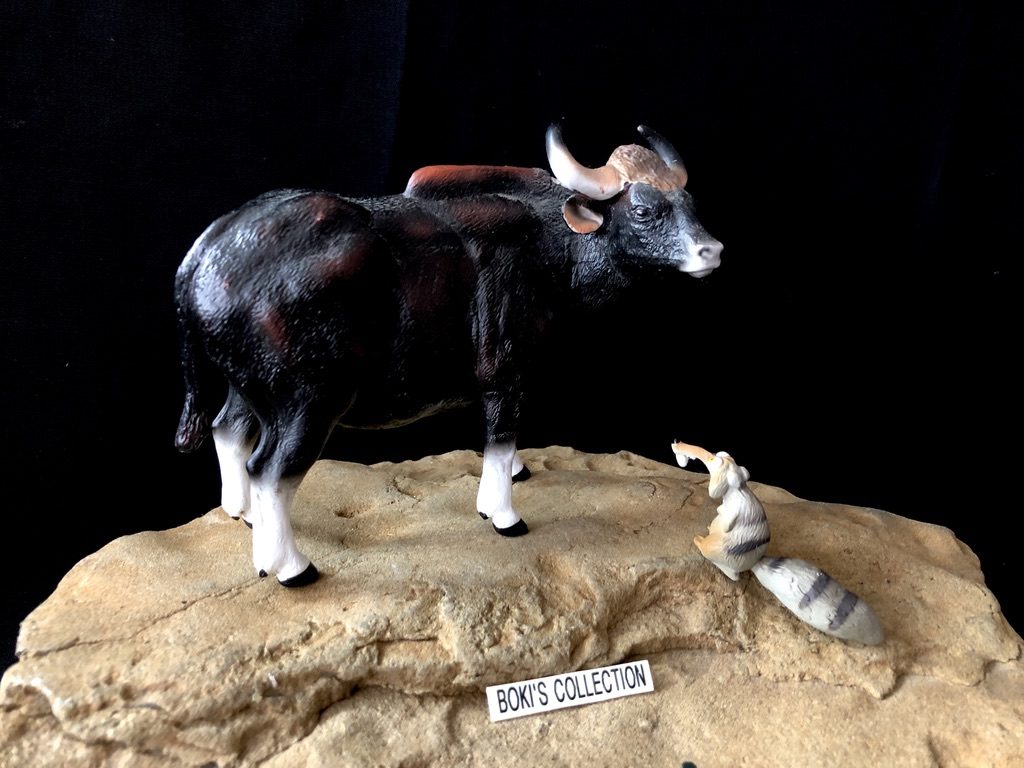
One of the largest mammal that calls these forest home is the Gaur, the subject of today’s review.
Gaurs (Bos gaurus) are the largest extant bovine left today. Also known as the Indian bison, it has a widespread distribution from India and Southeast Asia.

In 2013 Mojo Fun announced the release of a Gaur figure, which I believe is the first from any of today’s major toy brands.
I was pretty excited about the news. I first saw Gaurs way back in the early 2000’s when I visited a zoo that had them. Back then, I really din’t know much about the animal.
I was totally blown away by just how huge the animals are up close in person. The experience had a huge impact on me and I was fascinated by them.
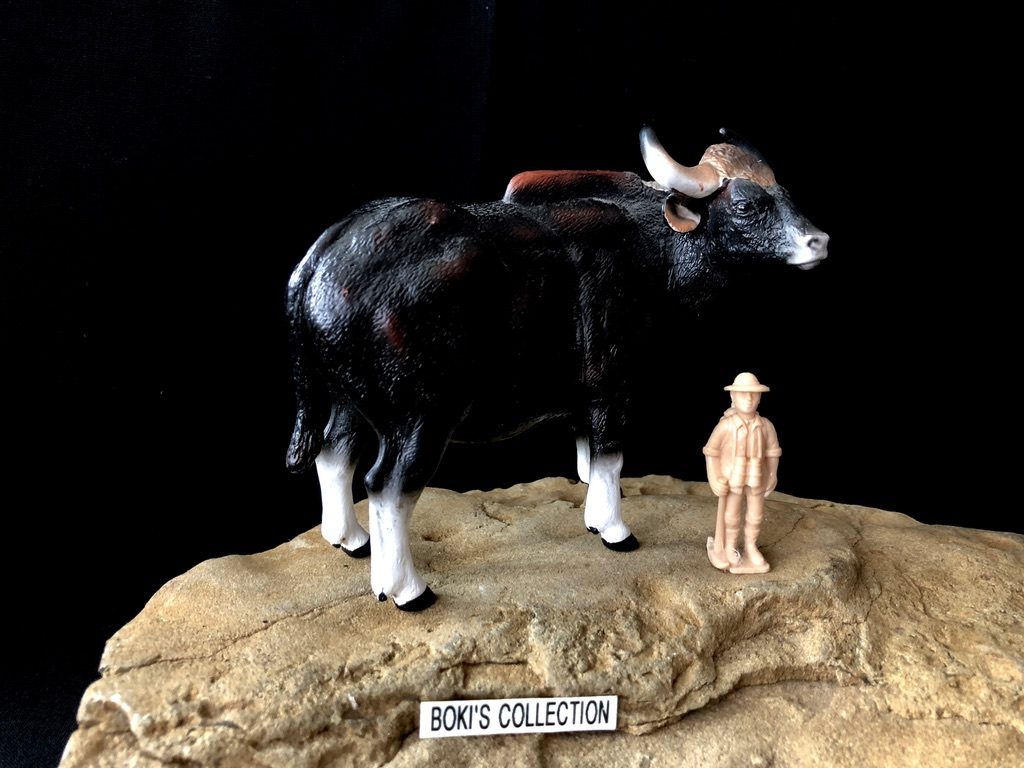
Gaurs are huge and impressive animals, they are also the tallest of the wild cattle species, with adults averaging around 6” feet tall! The figure is also big measuring in at almost 5”inches long and 4” tall (top of head), which puts the figure around the 1:20-1:22 scale I believe.
This figure is extra special one since not only is it beautiful, but it is also one that was sculpted by Anna Dobrowolska-Oczko who happens to be a member of the ATF ( check out her horse and bird website). Her work for Mojo also includes the Quagga as well as others, all beautiful.
If you visit her website, you will see that there was another Gaur version, an earlier one, before she sculpted this for Mojo.
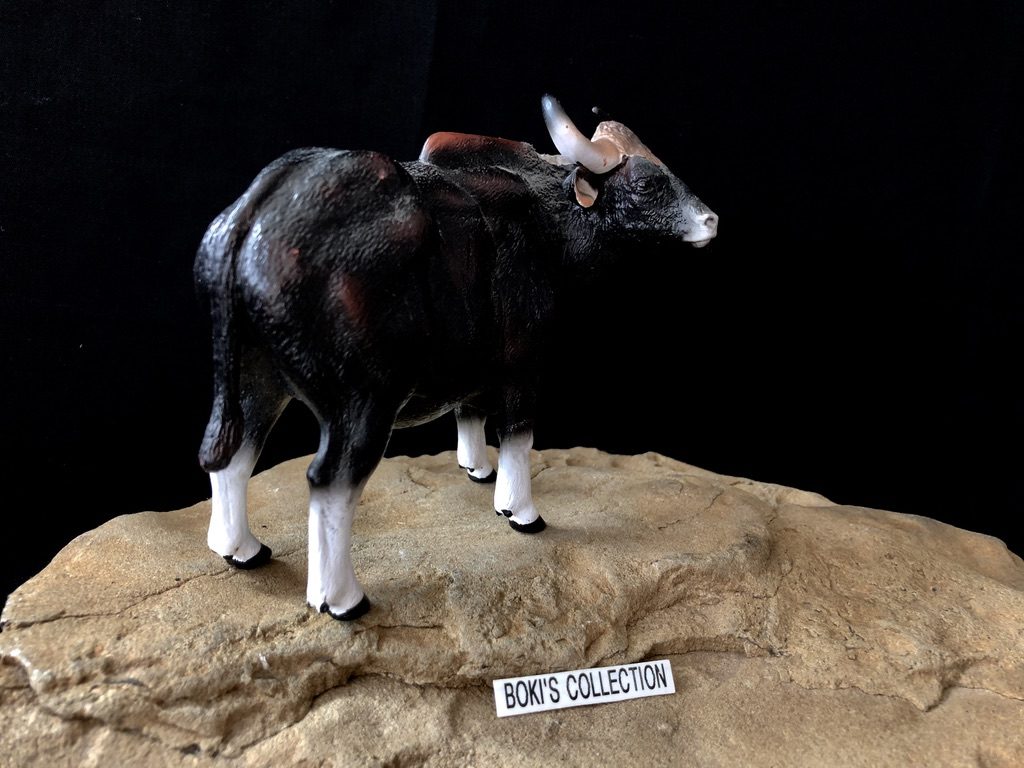
The figure is impressive and captures the grand majestic nature of the animal. It is strong and massively built animal that possess a distinctive high ridge on its forehead between the two impressive horns. This is faithfully replicated on the figure and you can see some longer hair covering this area. This high ridge is of a lighter color, almost a grayish white with a light brown highlights, which also happens to be the same color of the majority of the horns until it reaches the tip where it transitions to almost black tips.
The horns , present in both males and females, grows from the sides and curves upwards and slightly bent inwards towards the tips. The horns can grow up to 45” inches in adult bulls. While both sexes have horns, the females are slightly more slender and smaller.
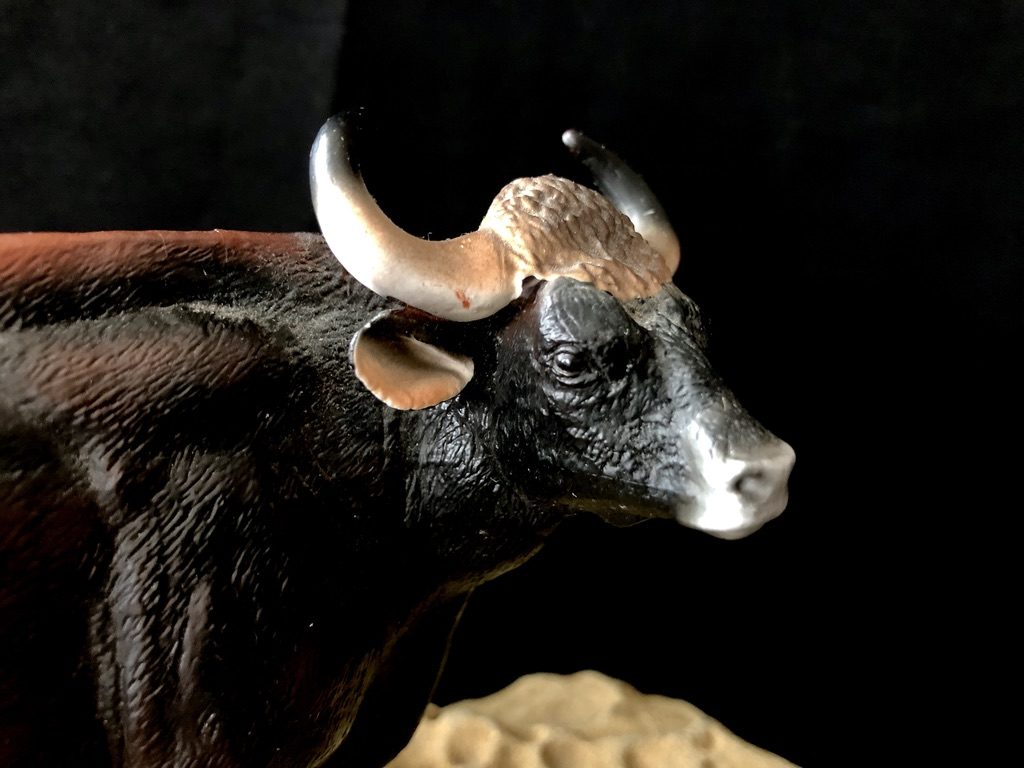
The head is rich in very delicate details if you look closely. The dark coloration tends to obscure some of them, but if you look close, you will see hair, skin wrinkles, and even some veins. The eyes at first looks black, but upon closer inspection, it really is a dark shade of brown.
The snout has the distinctive white color which is also the color of the nostrils, a departure from other bovids where the nostrils are usually colored black or dark brown.
The big ears is posed facing forward in an alert fashion and is colored rusty brown with some white highlights.
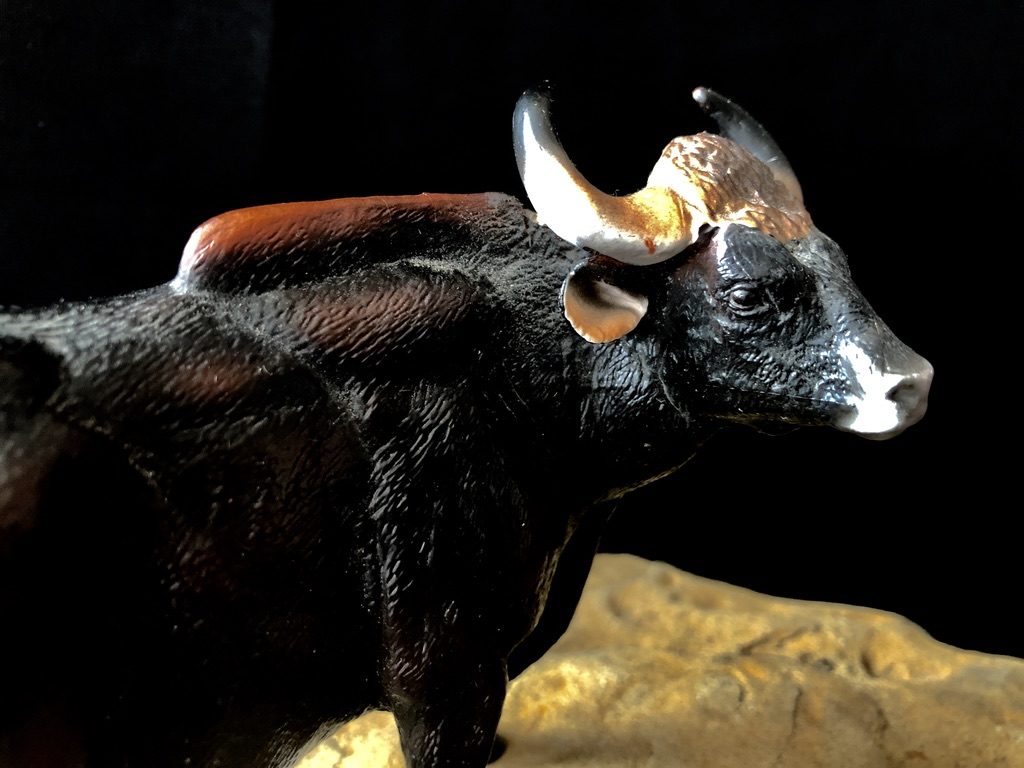
Gaurs preferred habitat includes large undisturbed evergreen forest, the moist deciduous forest, hilly terrains, and forest edges where there are abundance of forage like grasses, shrubs, bamboos, and trees.
In order to blend in, animals living in these habitat sport colors and patters that would allow them to disappear into the dappled lights of the forest.
There are large predators living in these forest such as leopards and the king of them all, the Tiger, that can take down a Gaur.
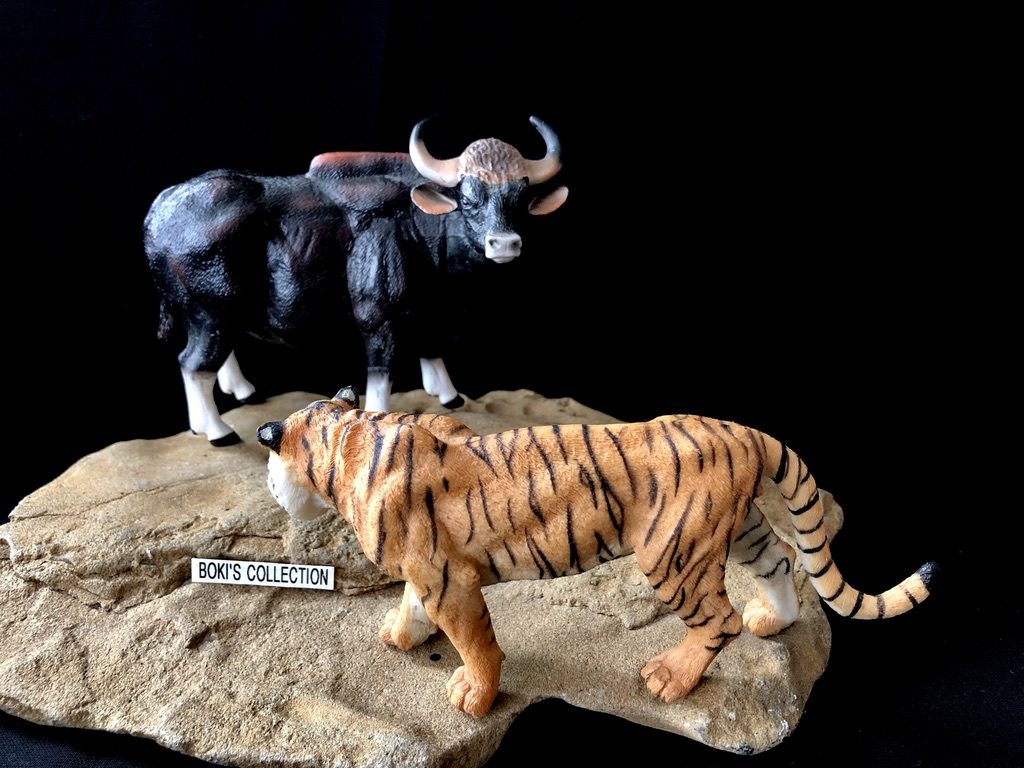
The male Gaur’s main body color is dark, ranging from dark, almost reddish brown to almost black. This colors are faithfully captured on the figure where the dominant color is a very dark brown, almost black with a rusty orange highlights. Females and young animals have a lighter chestnut colored fur.
The orange highlights on the figure’s fur help bring out the details like hair and musculature.You can really feel the strength of this animal just by looking at all the beautiful muscle definitions on the body.
Gaur have short hair all over the body and have a glossy look to it, something that is capture on the figure.
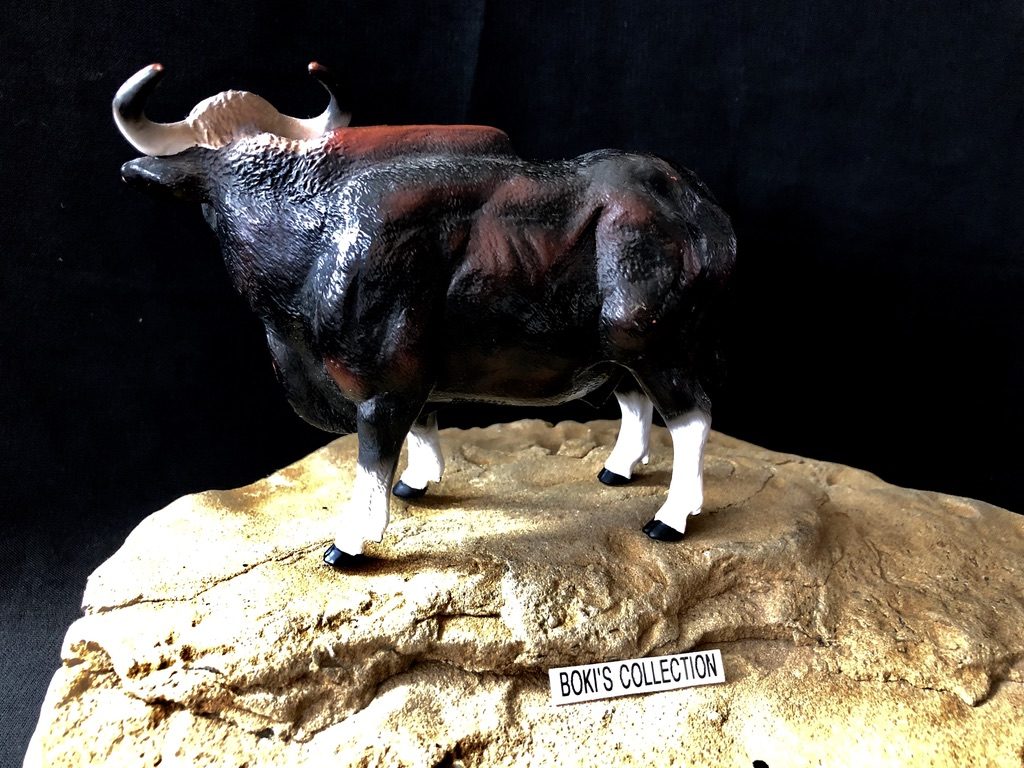
Gaur have a distinctive ridge running from the shoulders to the middle of the back, adding considerable hight and size to its already massive body. On the figure, this is nicely done and is highlighted in rust-orange.
In addition, there is also a large dewlap on the lower part of the neck. For such a large animal, the legs are fairly short but powerfully built, it is colored pure white like a socks, and is very distinctive. The hoofs are painted black. The tail is shorter and reaches the hocks.
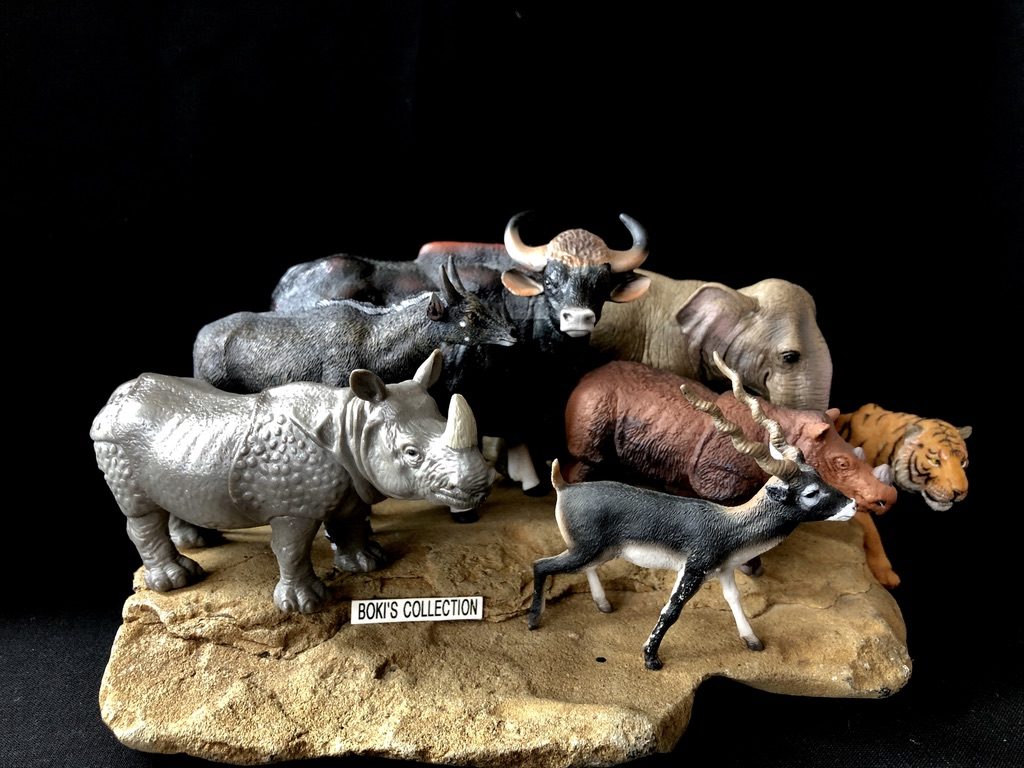
Gaurs have a wide distribution, ranging from India all the way to Southeast Asia. Like many of the worlds large bovid, Gaurs, too, have been domesticated by humans. These domesticated forms called Gayal ( Bos frontalis) are found in India, Bangladesh, Myanmar, and China.
These domesticated form are smaller than that of the true wild Gaur.
Despite having wide distribution, the Gaur is in serious decline in many of its range, suffering from habitat fragmentation and population isolation, as well as poaching.

Although the world wide population of true wild Gaur is estimated to be around several thousand animals, they are listed as Vulnerable by the IUCN due to the many threats it faces.
Also, many of the populations are so fragmented and isolated from each other and could face local extinction.

Despite all of these threats, the Gaur’s future is more optimistic when compared to the two other large Asian wild cattle species that, at one time, may have shared its habitat where they overlapped.
The Banteng, another large wild cattle is now listed as endangered by the IUCN. It shares many physical characteristics with the Gaur.
Then there is the mysterious Kouprey another large wild Asian cattle, an animal with very few documented records, let alone confirmed sightings, that for all purpose may already be extinct before it can even be properly studied, a victim of habitat loss, war, and poaching.
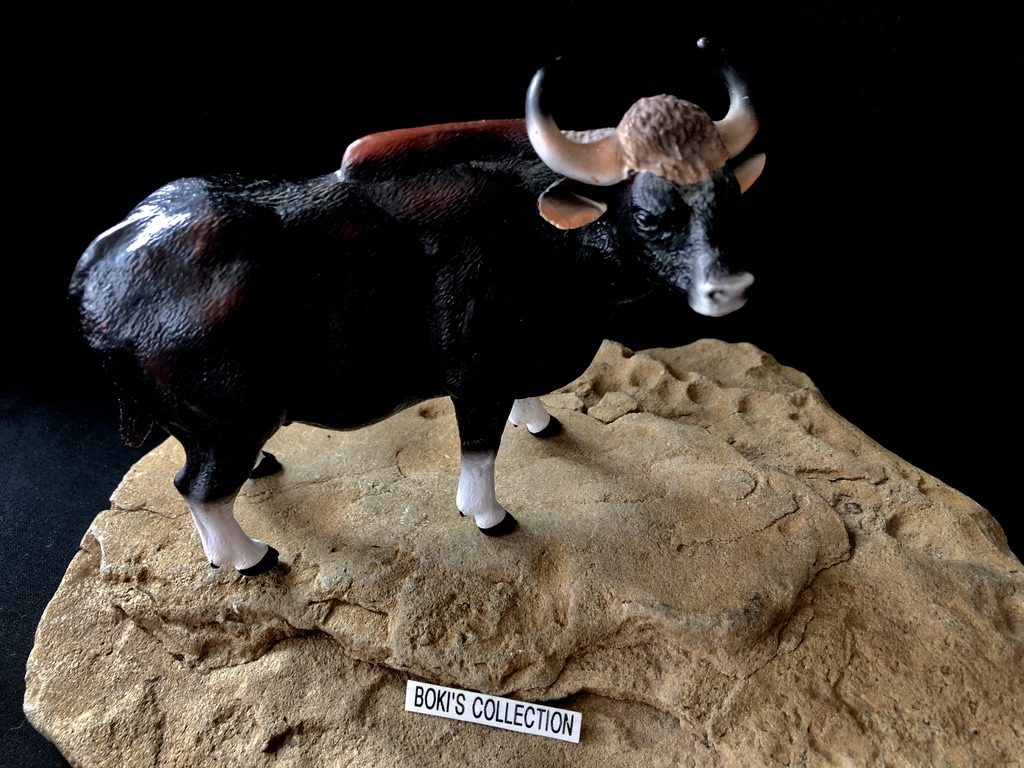
Gaurs are popular animals in zoo’s and animal parks, and there is a sizable captive population of them around the world.
In closing, this Gaur figure from Mojo is truly one of the gems from their extant animal line. Beautifully sculpted by Anna, it really accurately captures the majestic nature of the animal.
When it comes to wild cattle, there are not that many figures out there, so this is definitely something worth adding to any collection.
Its a good size figure, too, that would fit many of the standard 1:20 -1:22 scale figures out there, yes, even the prehistoric mammals figures.
I hope that one day we may see figures of the other two Asian wild and endangered cattle species, it would make a great companion figures for our Gaur!
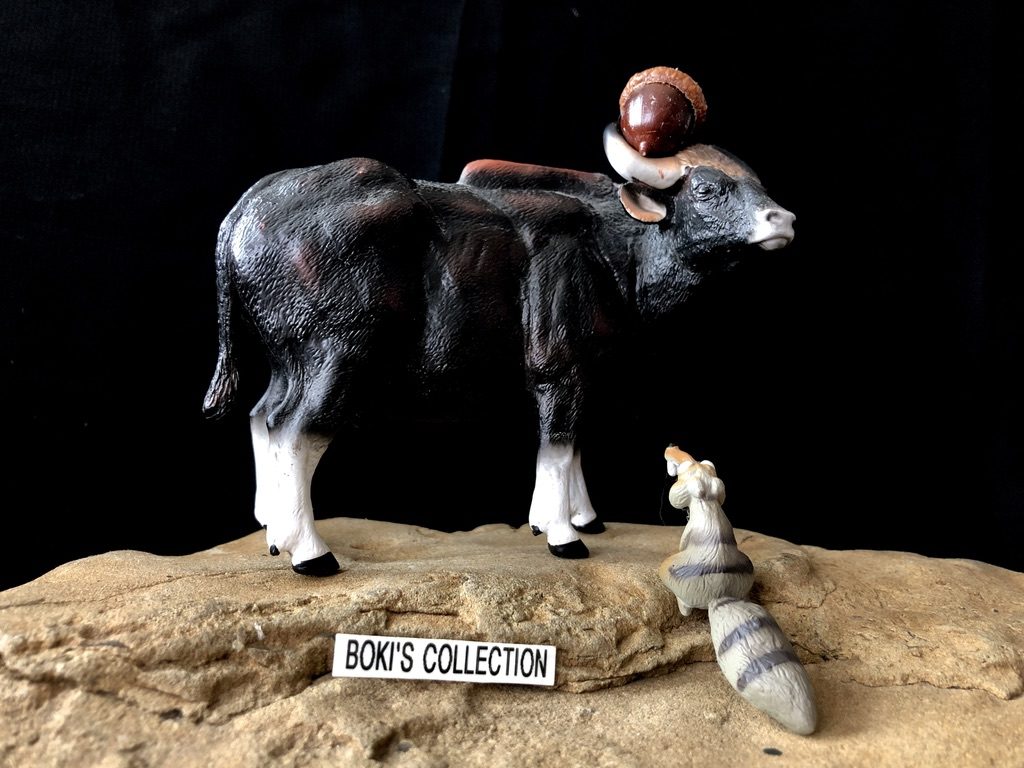
Well, that concludes our review. I hope that you liked it, thanks for reading.
Hope you will join me next time as we continue exploring the many exotic places and discover the fascinating animals that live in them.
Until we meet again, take care, Cheers!
Disclaimer: links to Ebay and Amazon on the AnimalToyBlog are affiliate links, so we make a small commission if you use them. Thanks for supporting us!




Wonderful! I have this figure in my Synoptic Collection. Not that there are a lot of options for a gaur, but even if there were, this is the one to get! 😀
The only toy figure available other than this one was a small Play Visions one, part of the Gir forest set. But it wasn’t quite as impressive.
That’s a review that does justice to the figure featured. A very good presentation of a masterpiece. Yes, this gaur is probably my favorite figure of ever.
Adding to Sean’s comment, there is also a New-Ray gaur, not very impressive too.